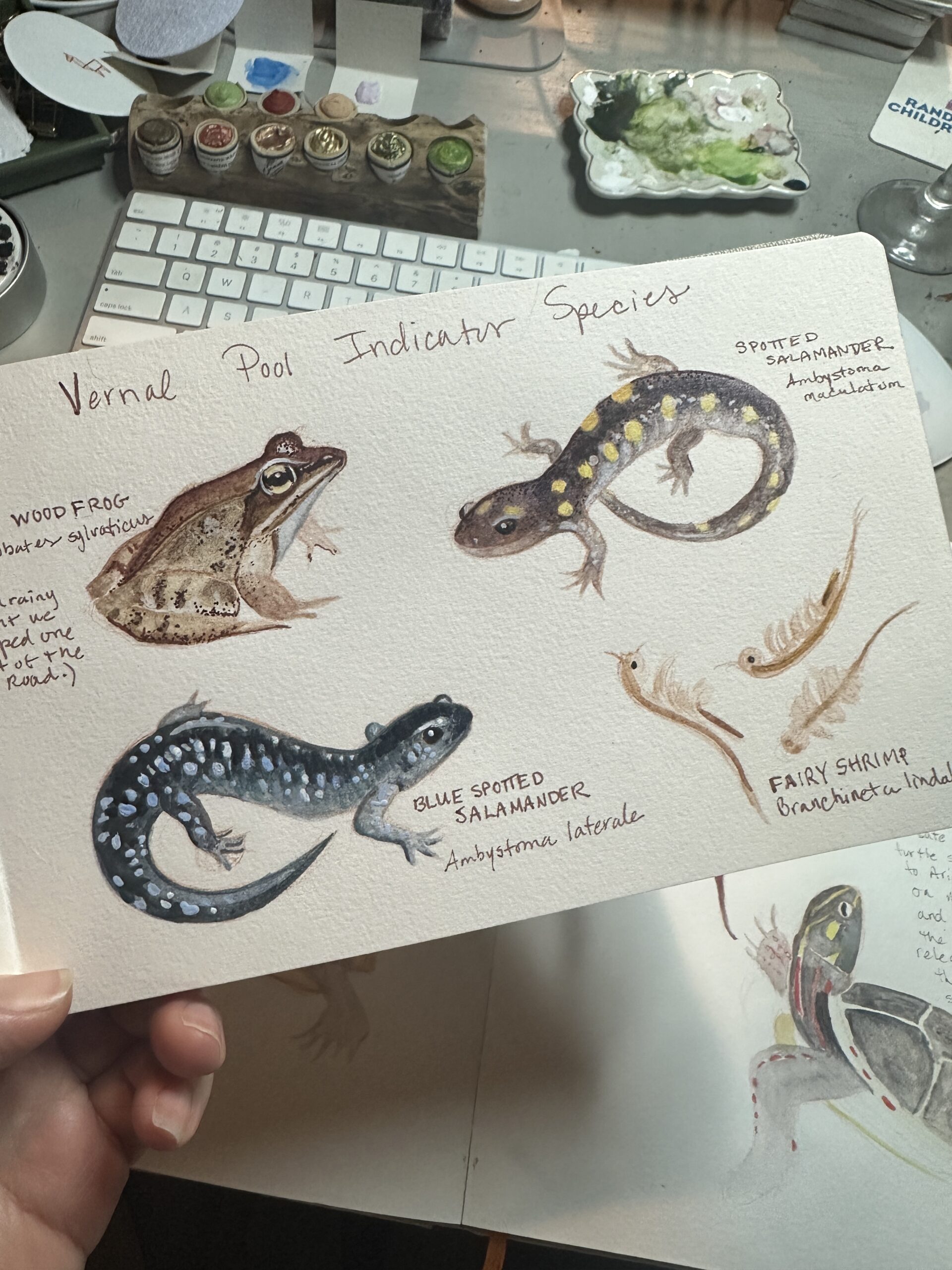May 26, 2025
April and May with the Maine Master Naturalist Program
We met as a Maine Master Naturalist group at Gilsland Farm on early on April 9 and 12, and they sent us off with homework until May. We met as a group again on May 21 and 24, so there was a lot of time in between to study reptiles, amphibians, and vernal pools. Read on to see a sampling of my adventures.
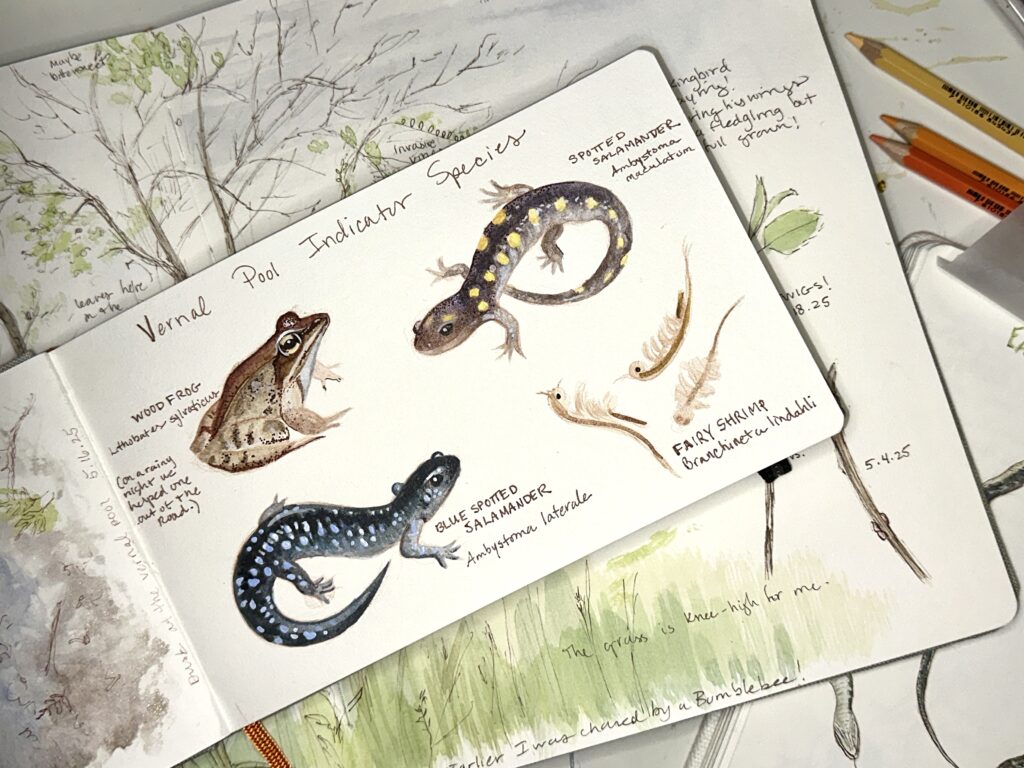
At our April field trip, we were scheduled to observe vernal pools in the area, but the temps were still so low the pools were not active. The leaders improvised and created several opportunities for us, so on May 3rd, I joined a field trip at Mayor Baxter Woods in Portland. We saw salamander egg masses, tadpoles, two peepers, spermatophores, a Red-backed Salamander, an Eastern Painted Turtle, and wildflowers, such as violets and trout lilies.
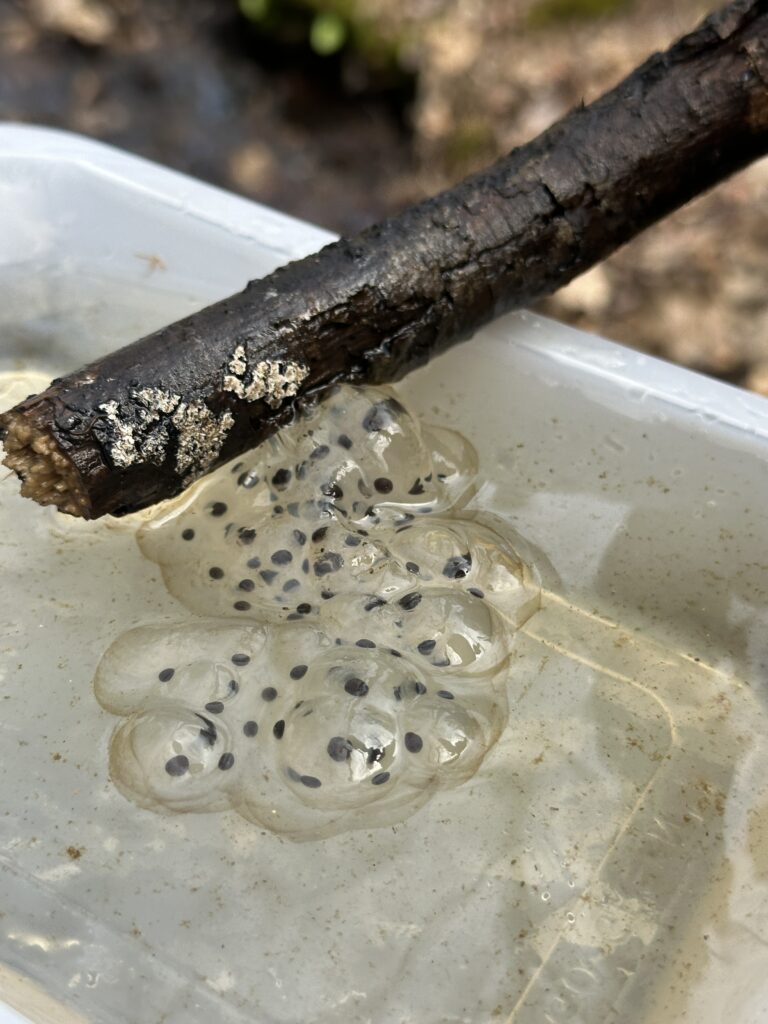
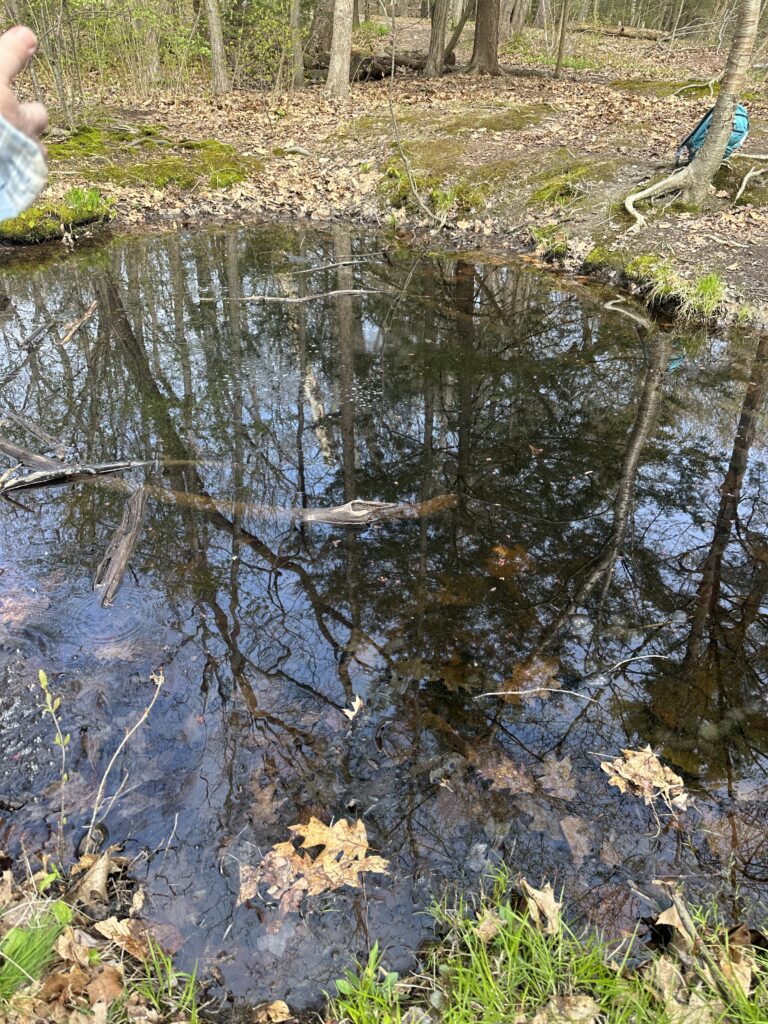
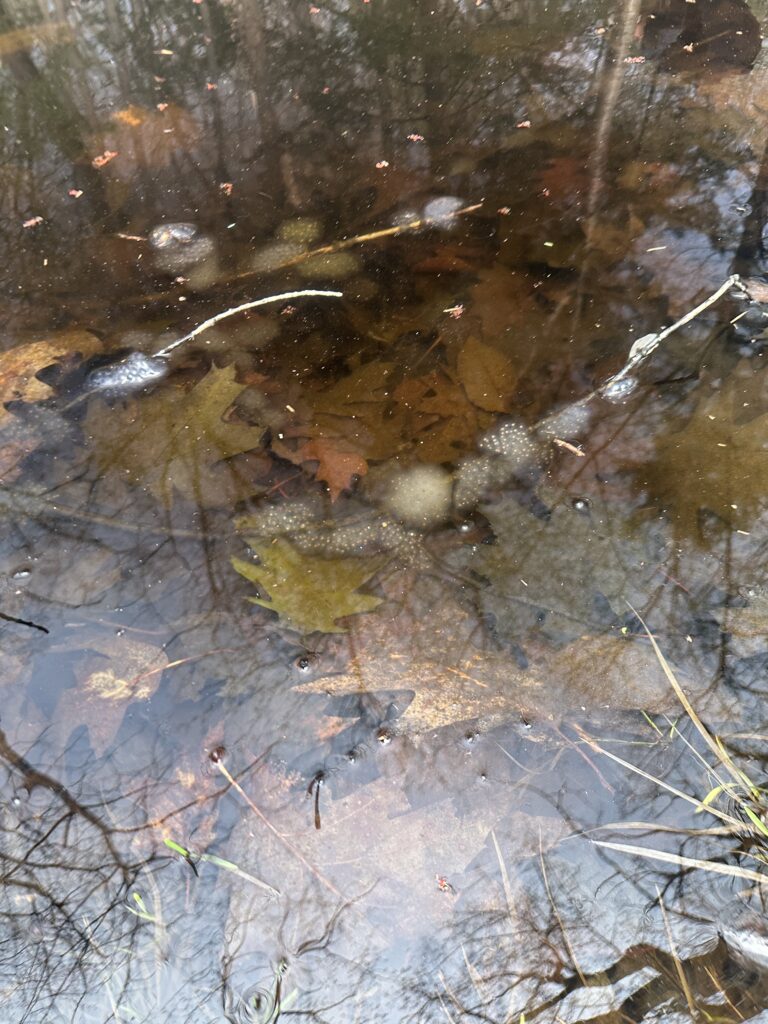
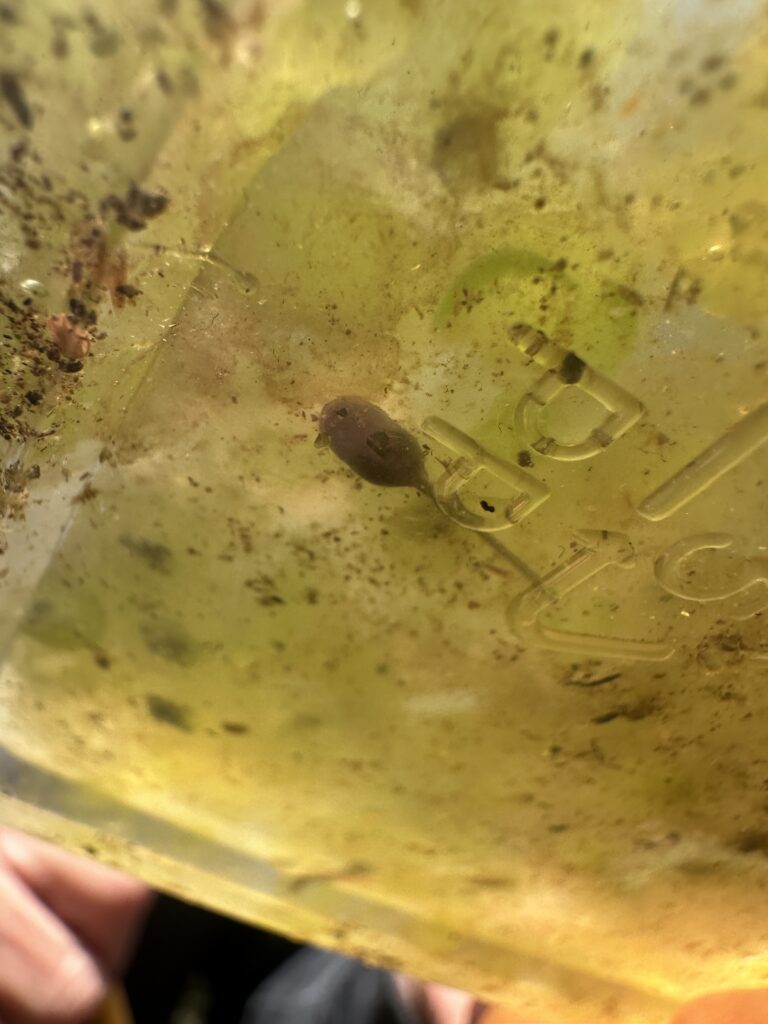
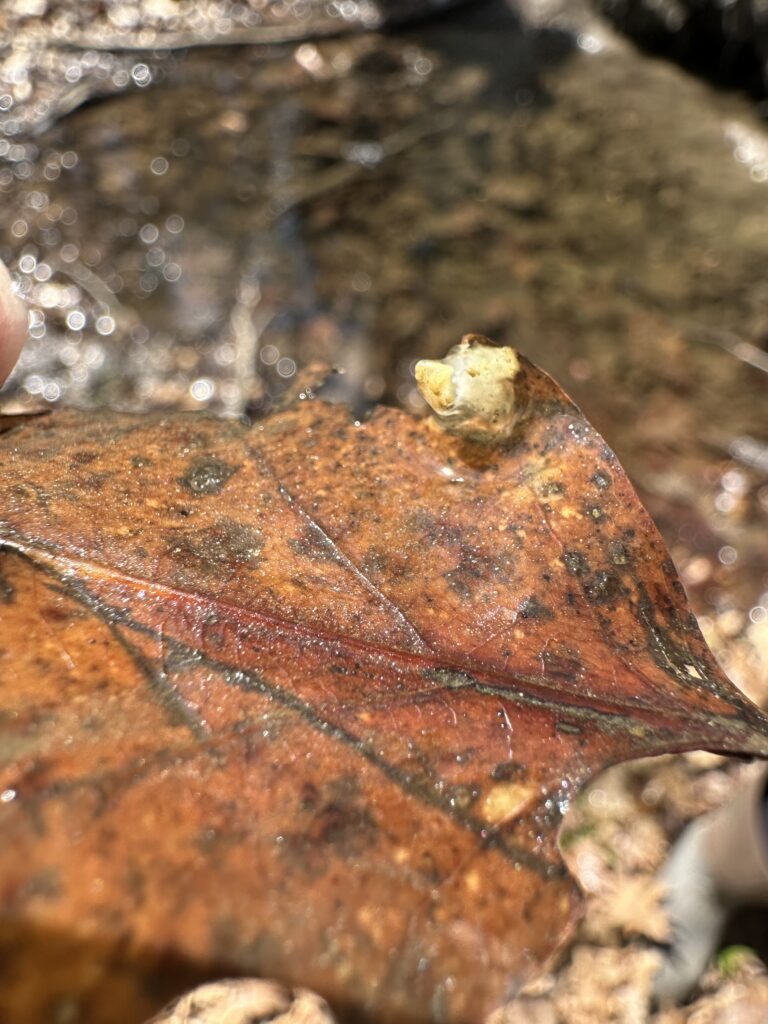
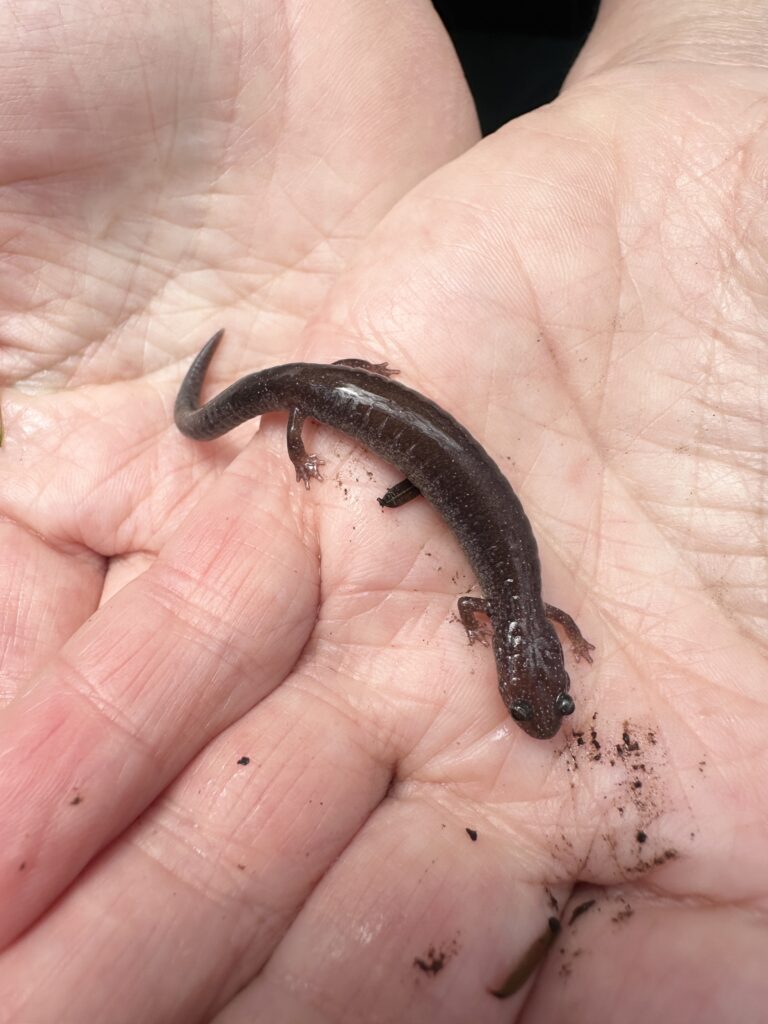
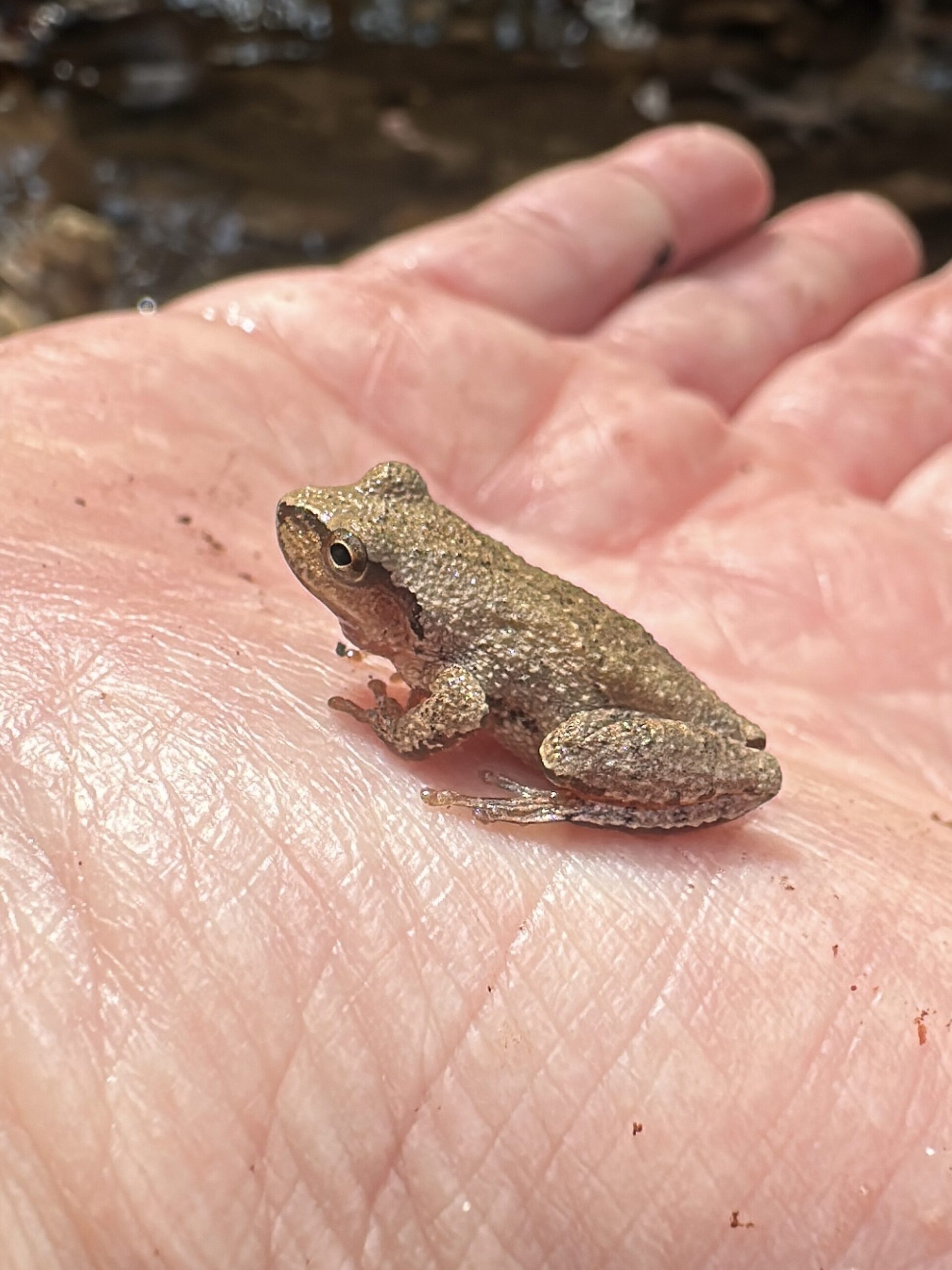
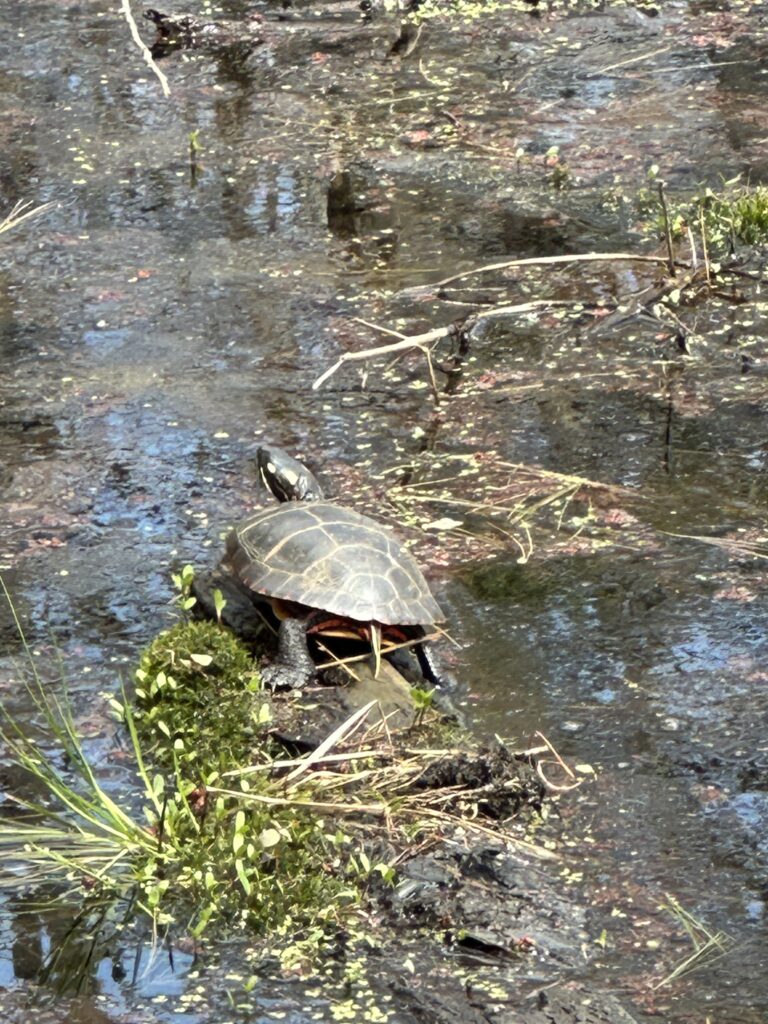
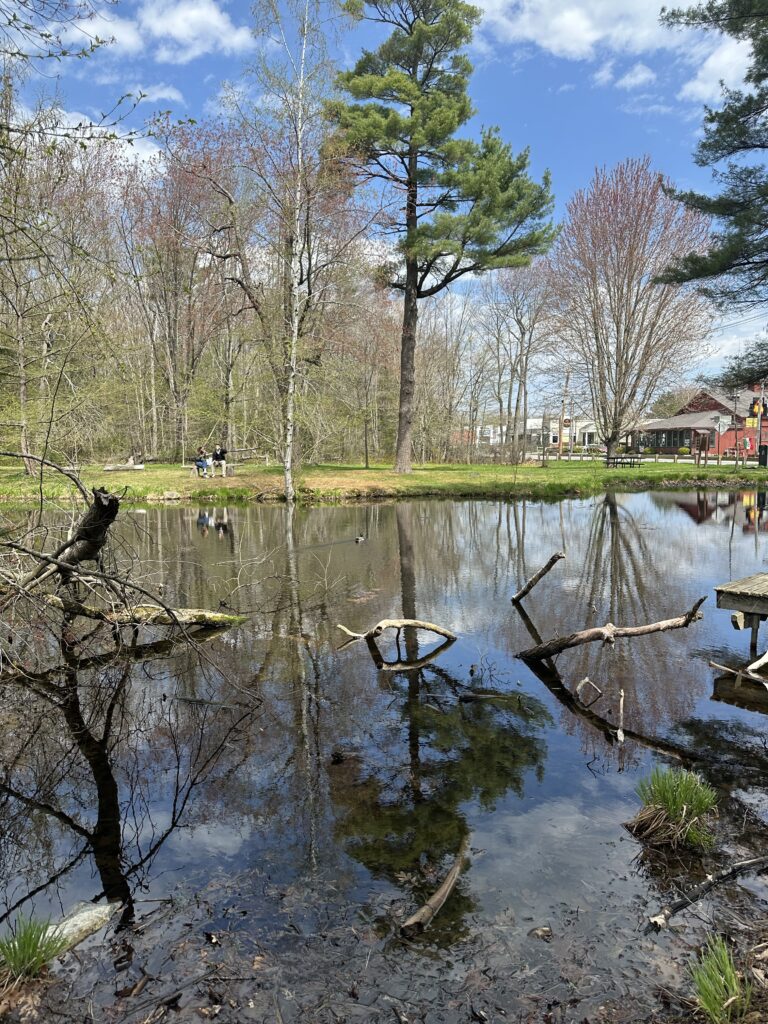
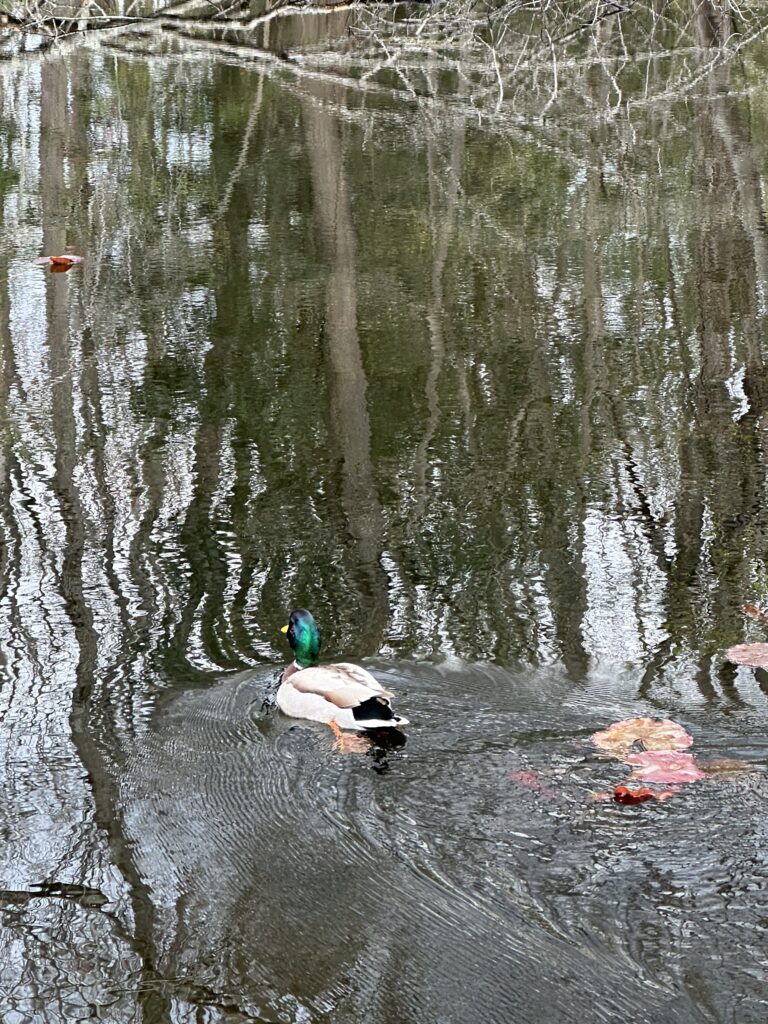
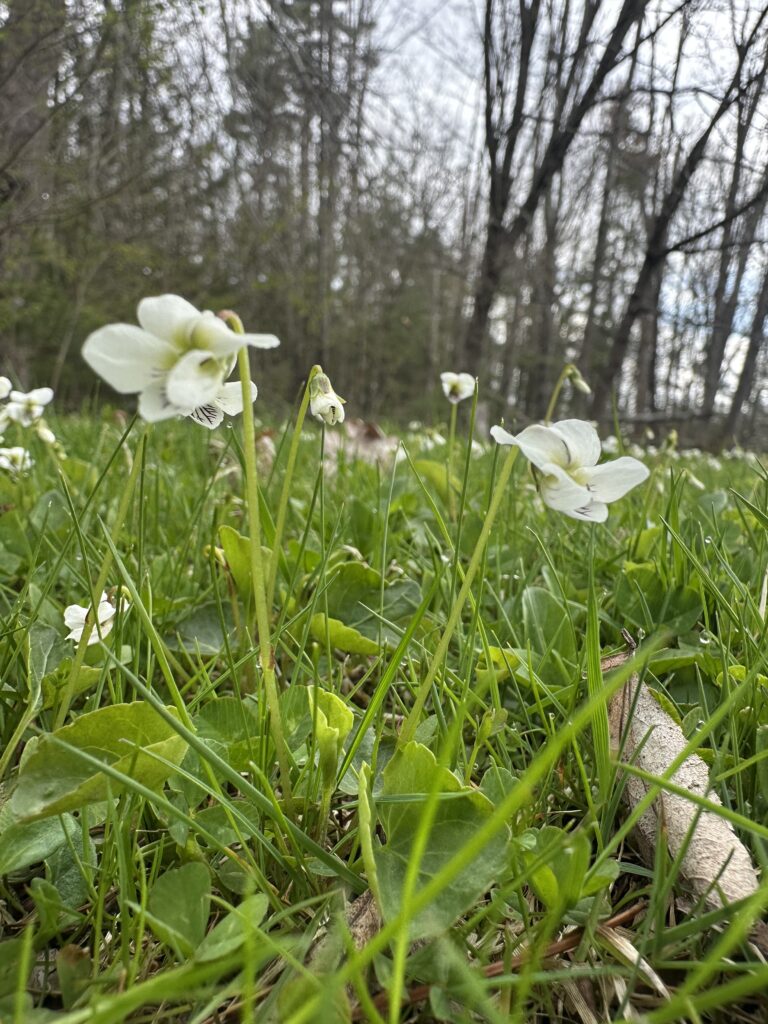
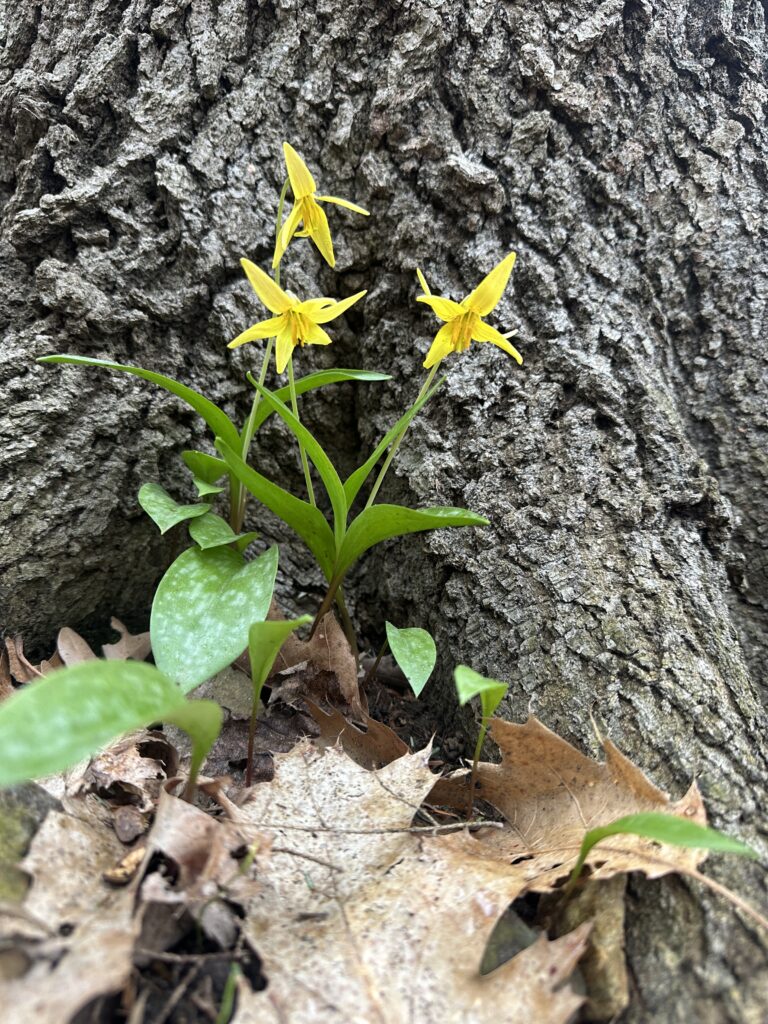
One of the assignments was to find a vernal pool to monitor and record observations. First I tried a spot in the woods that I was sure would be a vernal pool, but there was no activity and even though it fills and dries up each year, as a vernal pool does, this one seemed more like a big puddle. I tried another spot near my house and found caddis flies, a spider, ducks flew over head, but not indicator species. I noticed the grasses in the water were all facing one direction and were was a bit of flow, so this told me there was a definitive inlet and outlet— not a vernal pool.
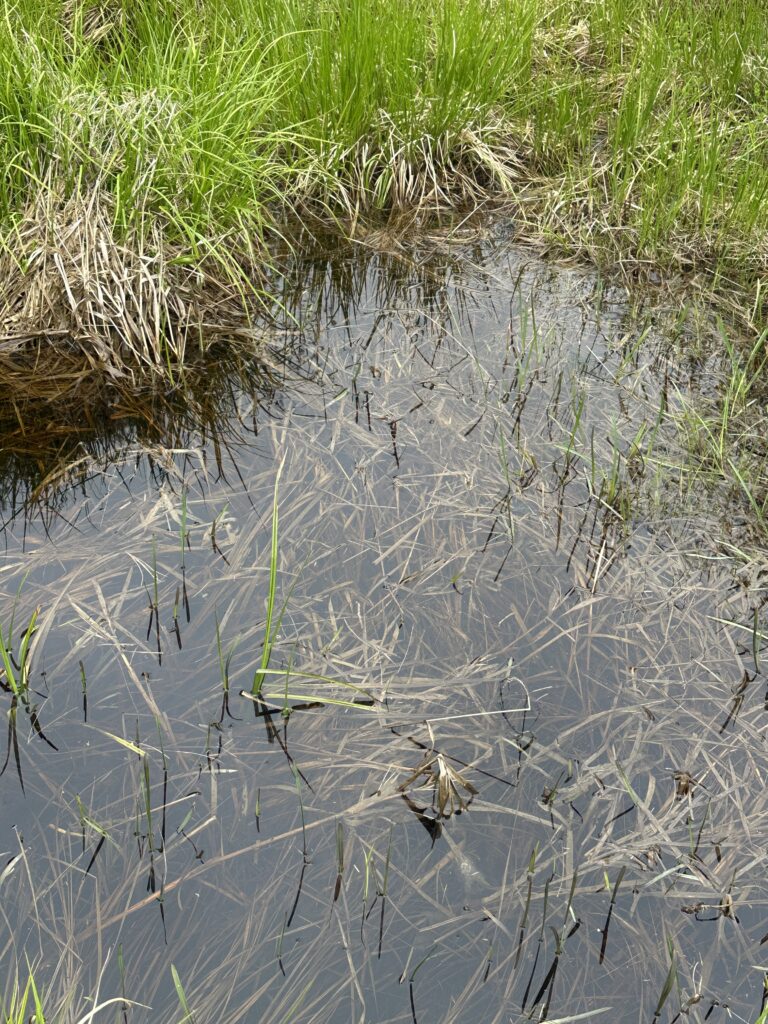
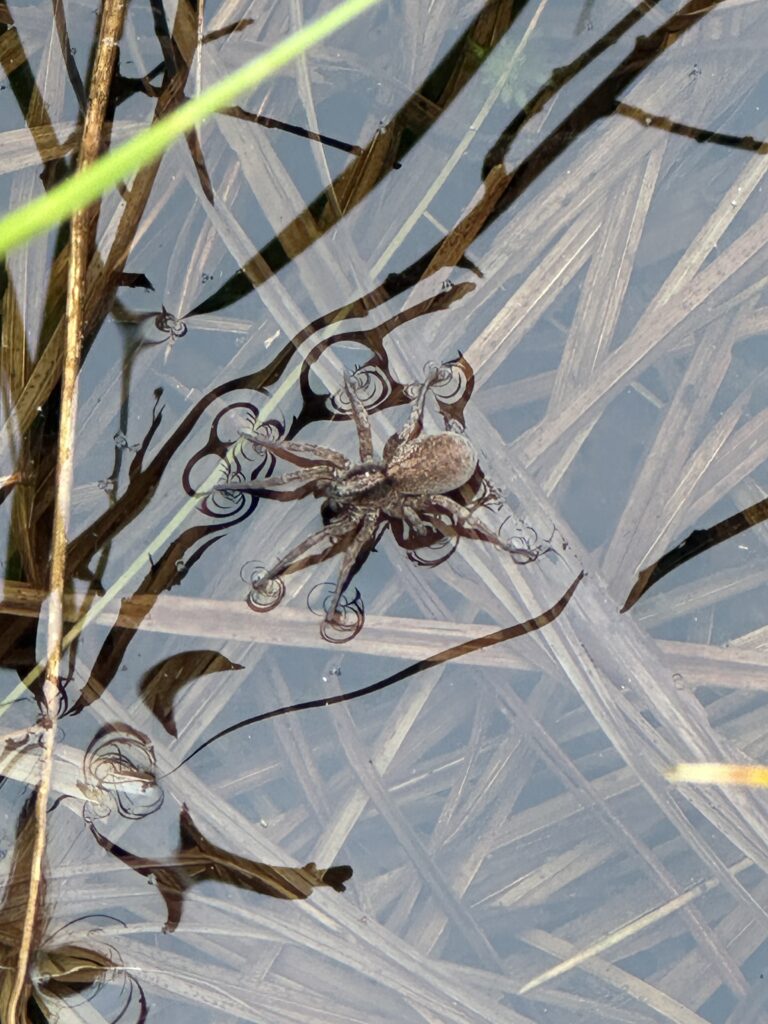
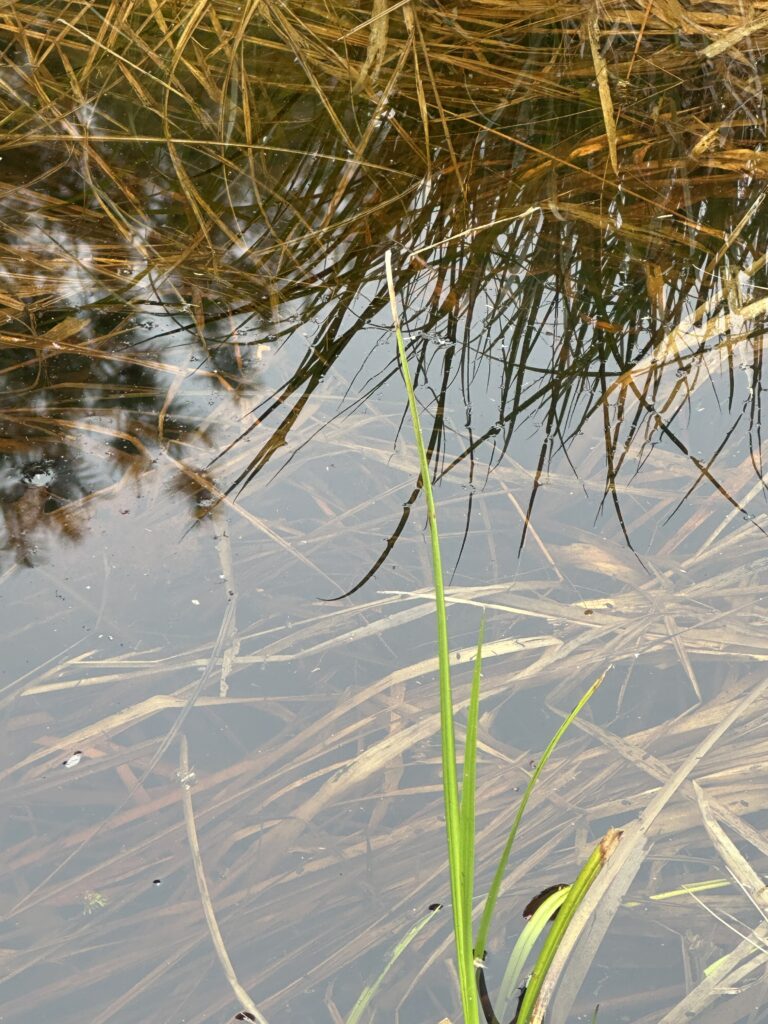
Then I googled and found there was a site that could help me locate vernal pools in my area. So I used the map and found there was a vernal pool at the University of New England, Biddeford campus, right where I work. (I’m an art professor there.) While this was for sure a vernal pool, there were no more egg masses and the frogs and salamanders were more vocal and then visual. I visited this vernal pool several times and spent time watching a Pileated Woodpecker, listening to the wood frogs, tree, frogs, peepers, and bull frogs, and the peace of the landscape.
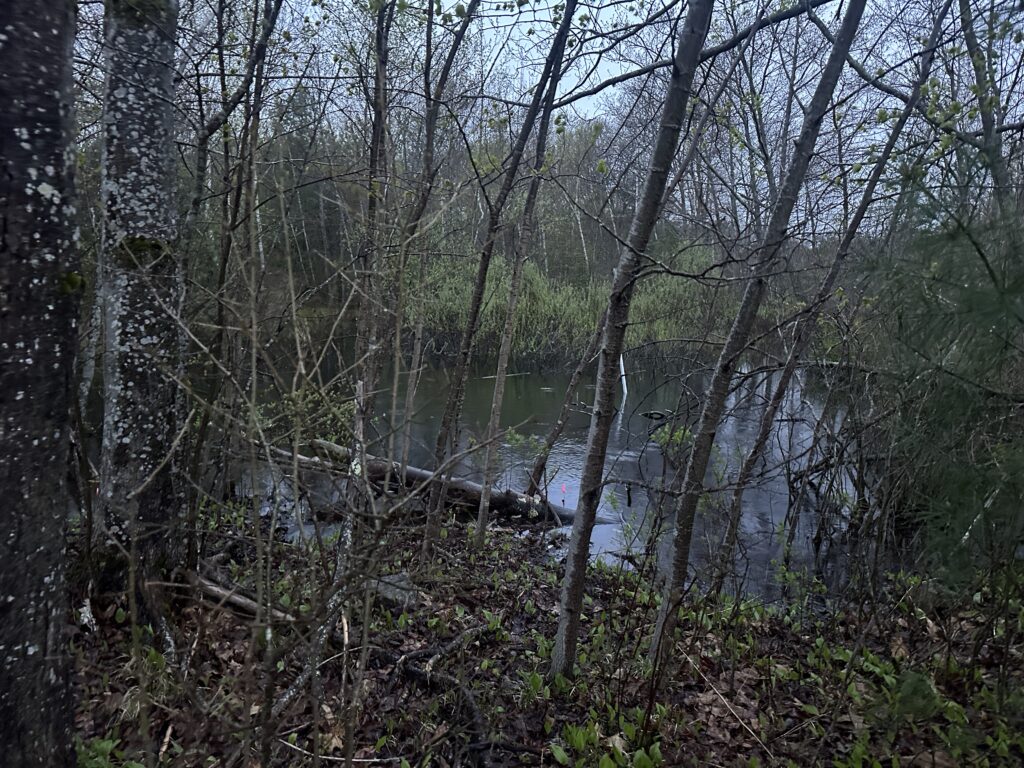
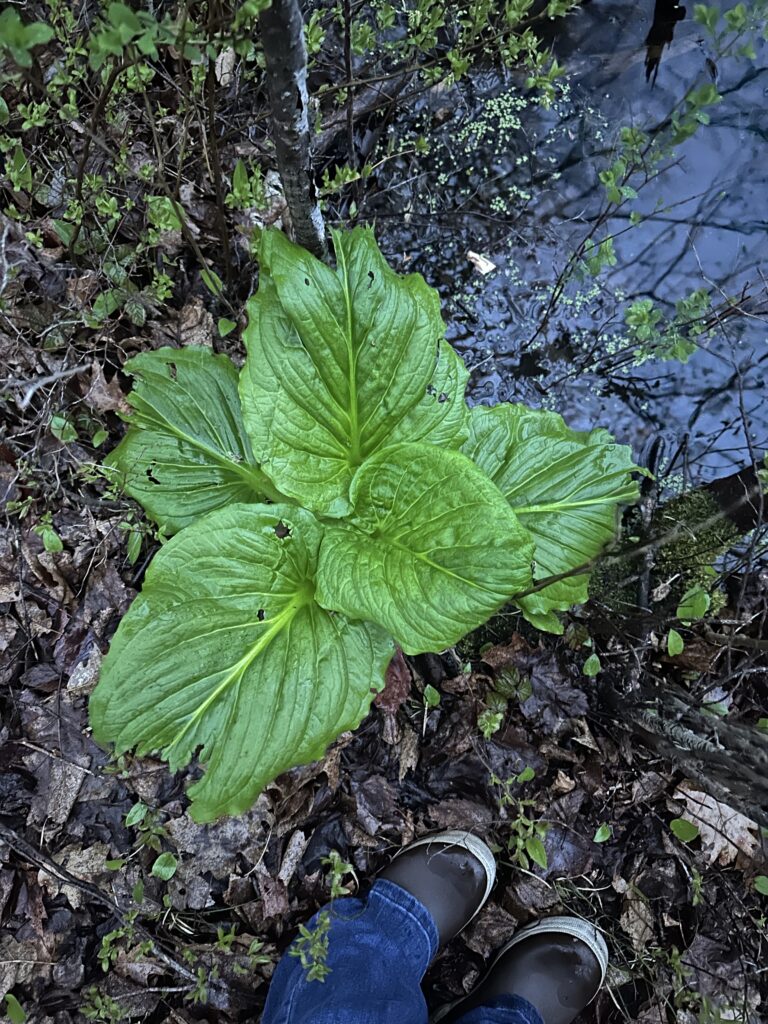
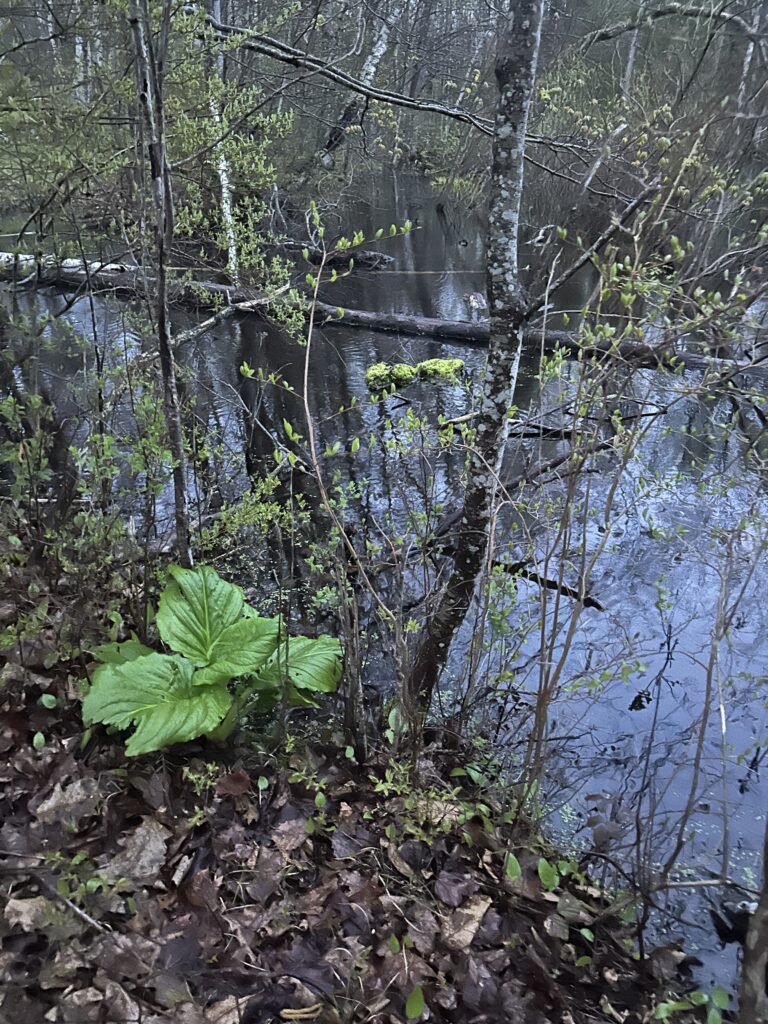
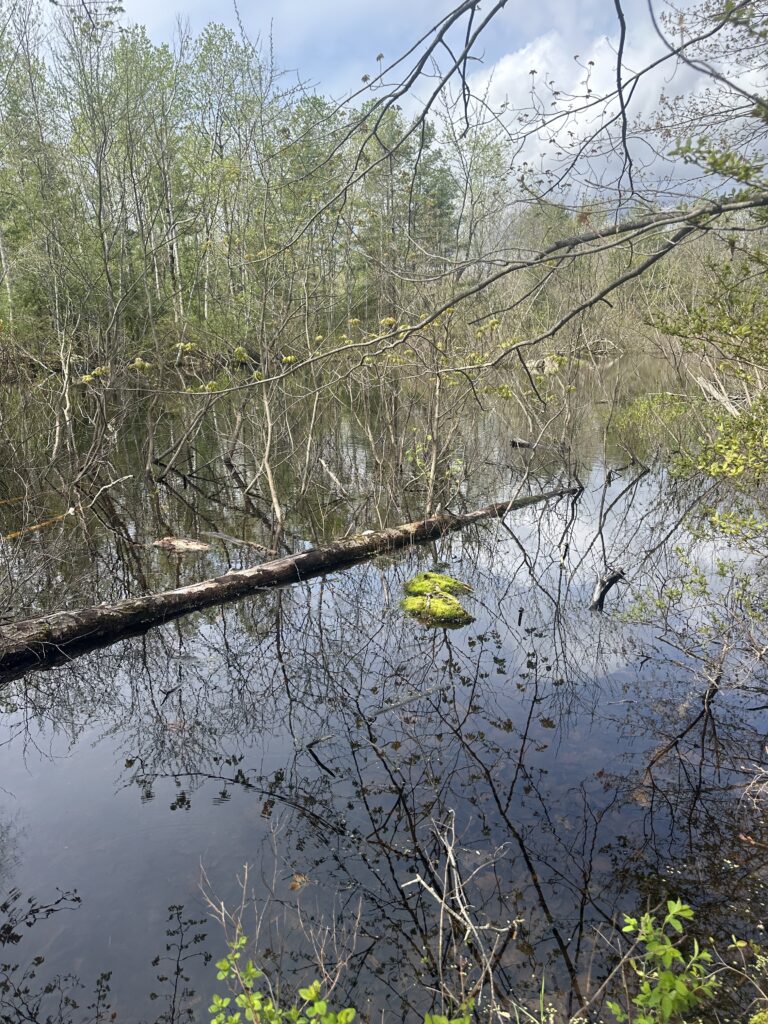

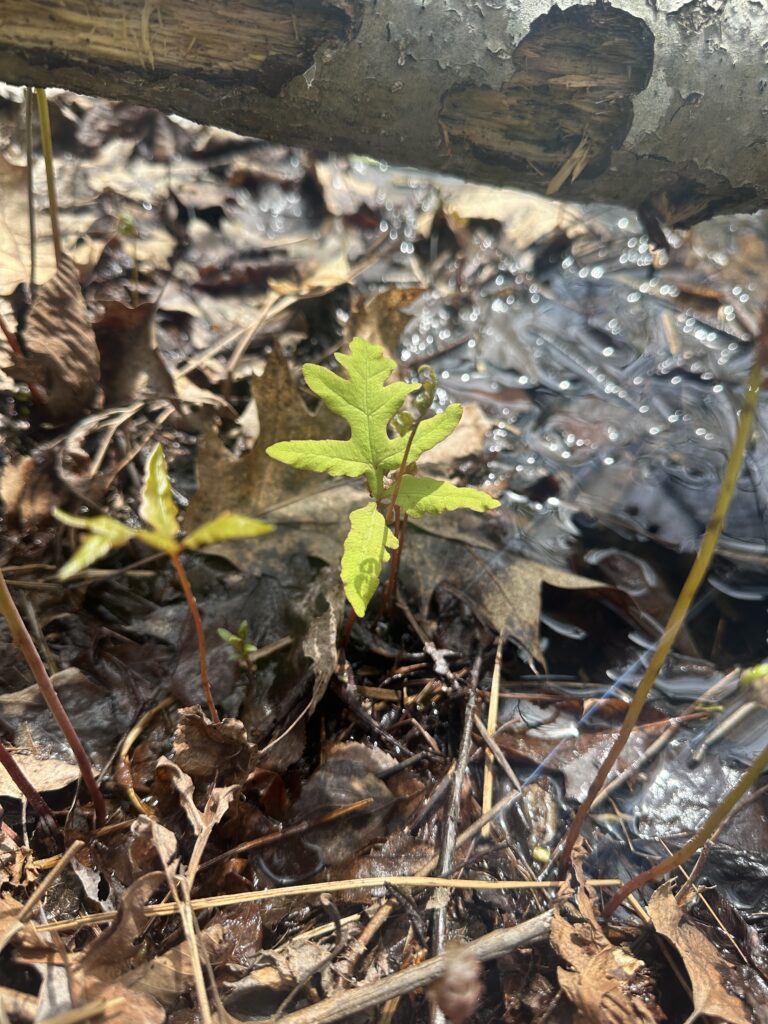
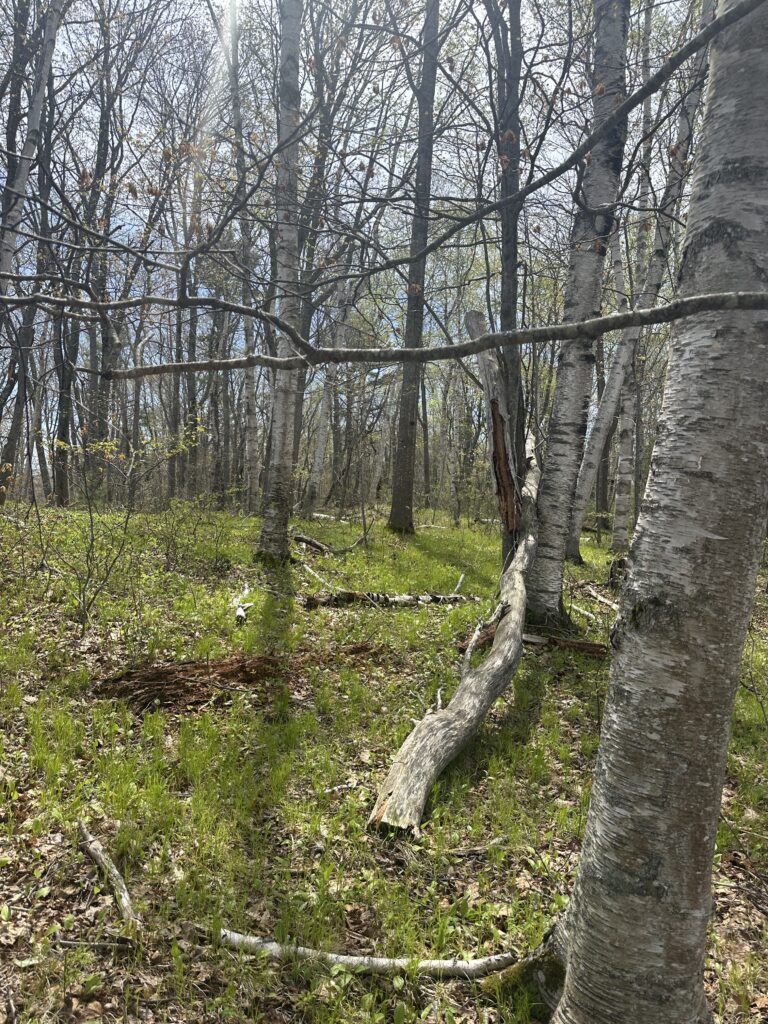
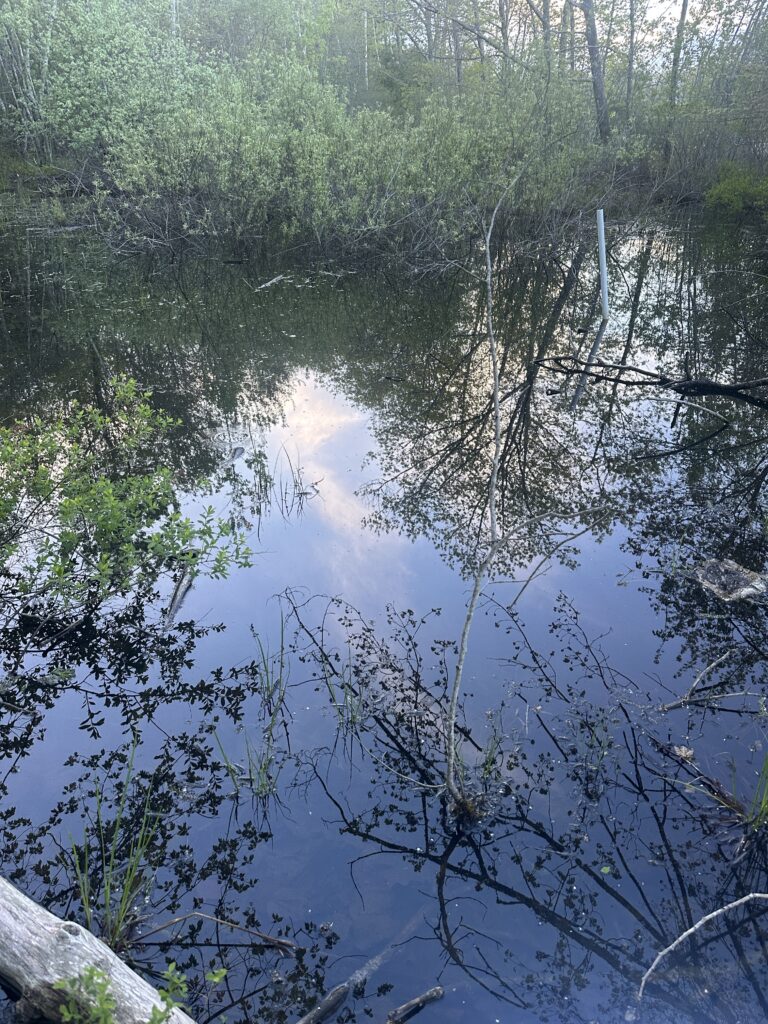

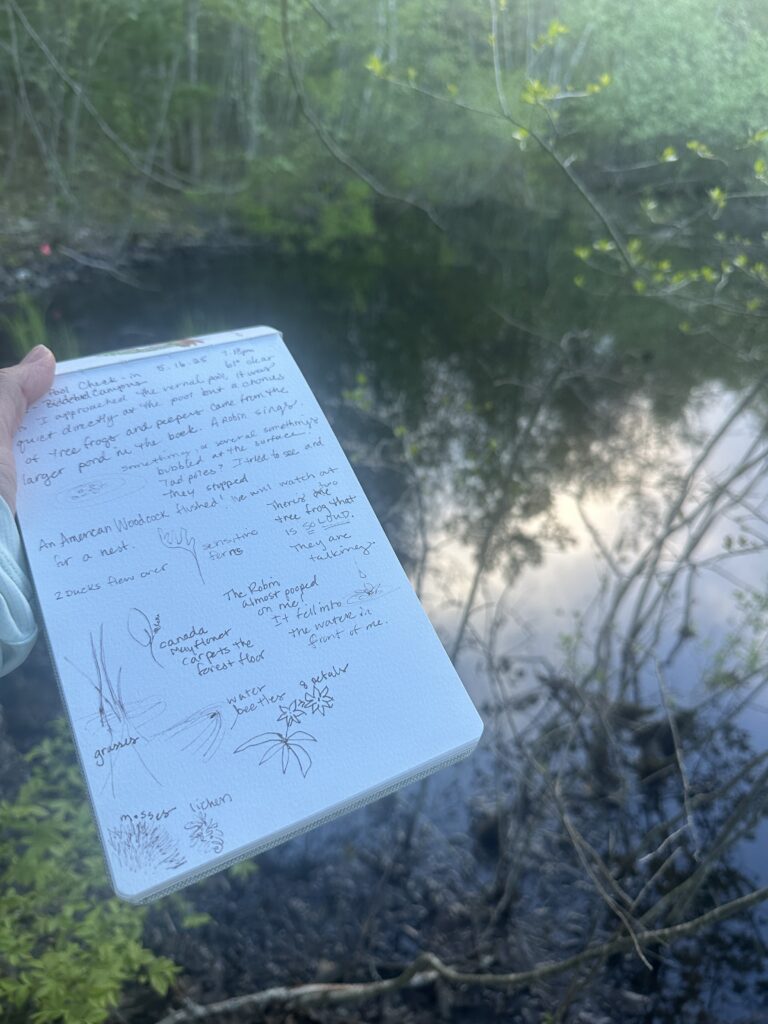
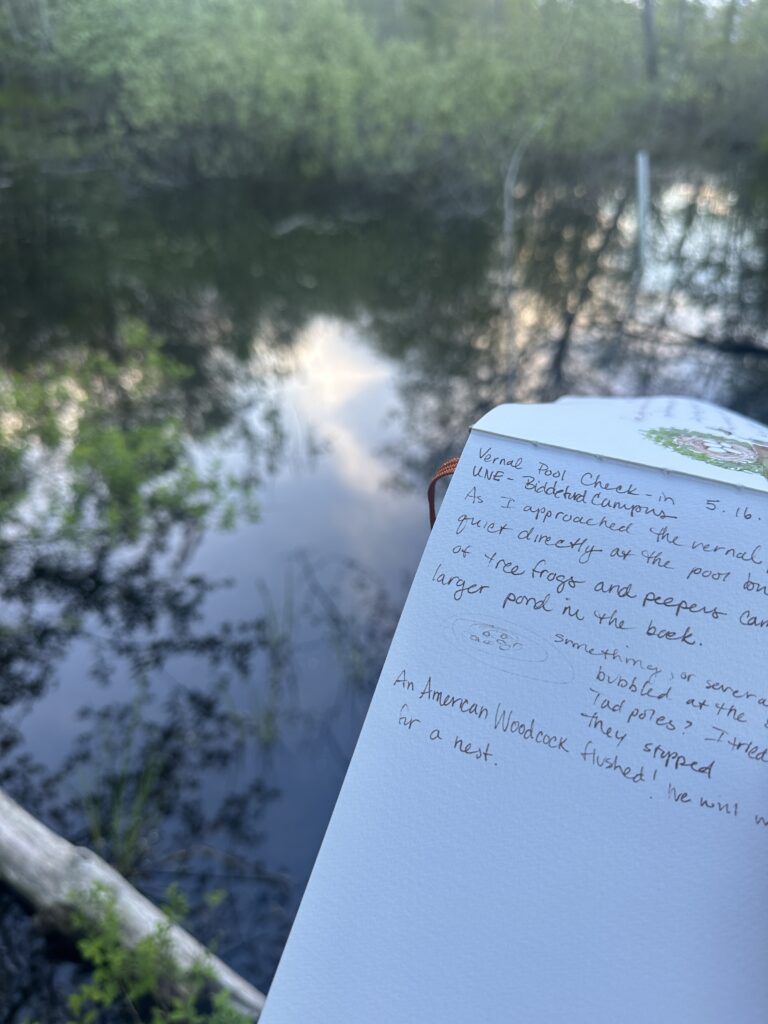
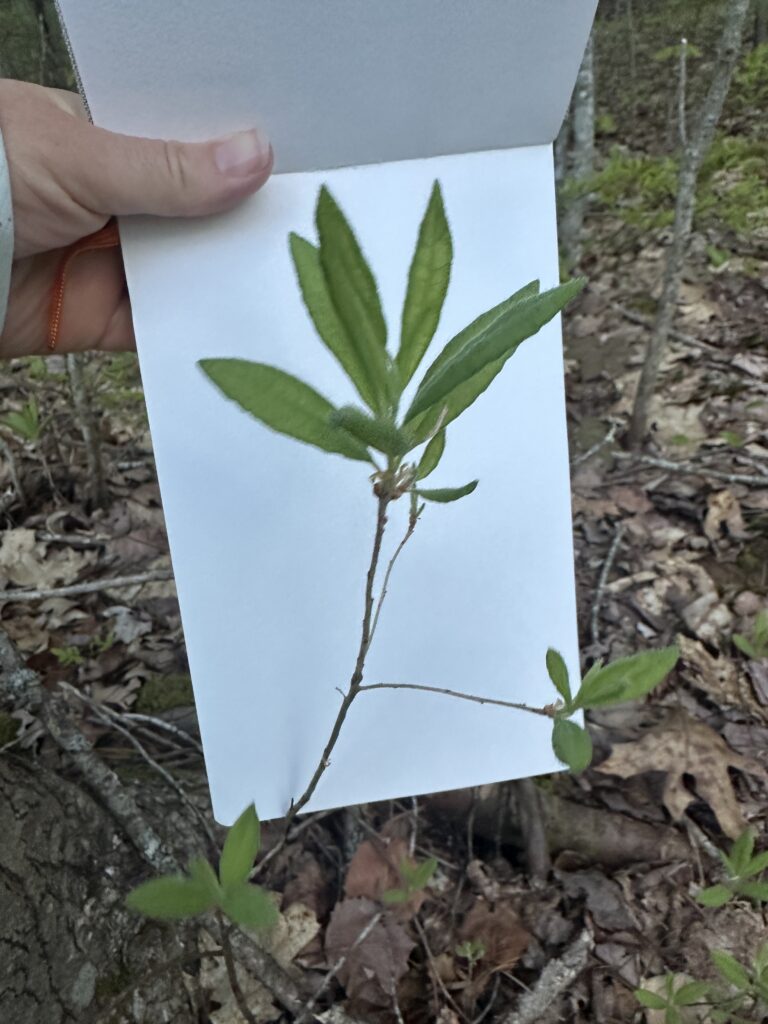
On May 13, I attended a wildflower walk with the Wild Seed Project at Robinson’s Woods Preserve and learned about native species such as gold thread, wild sasparilla, Solomon’s plume, blue bead lily, and more.
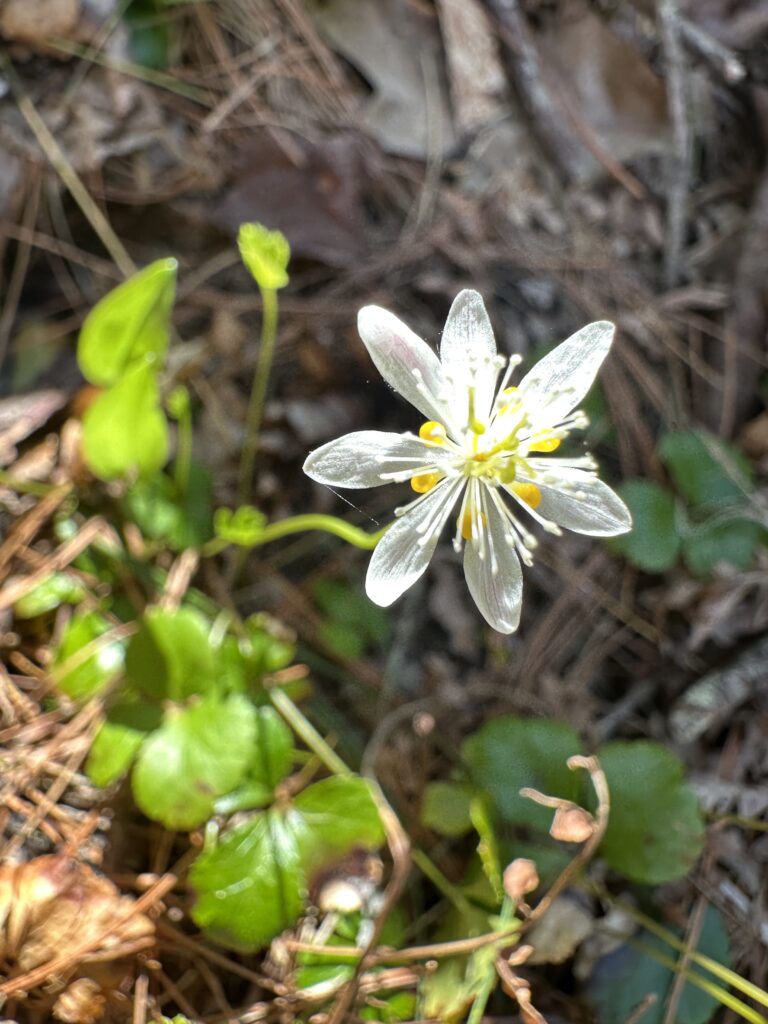
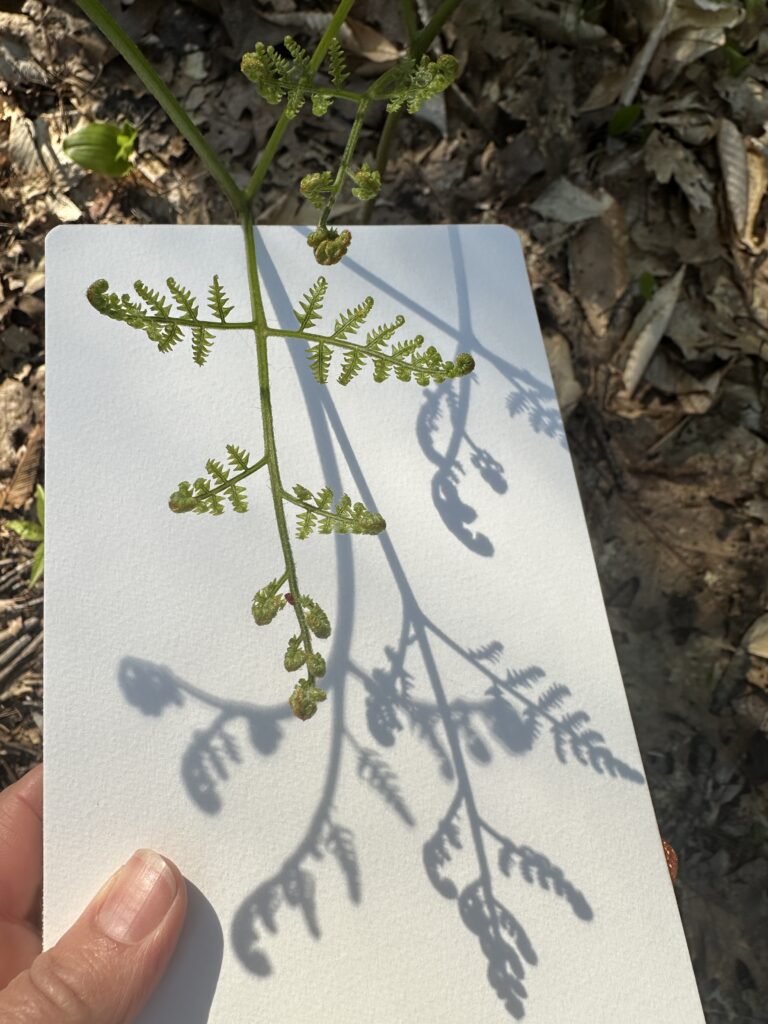


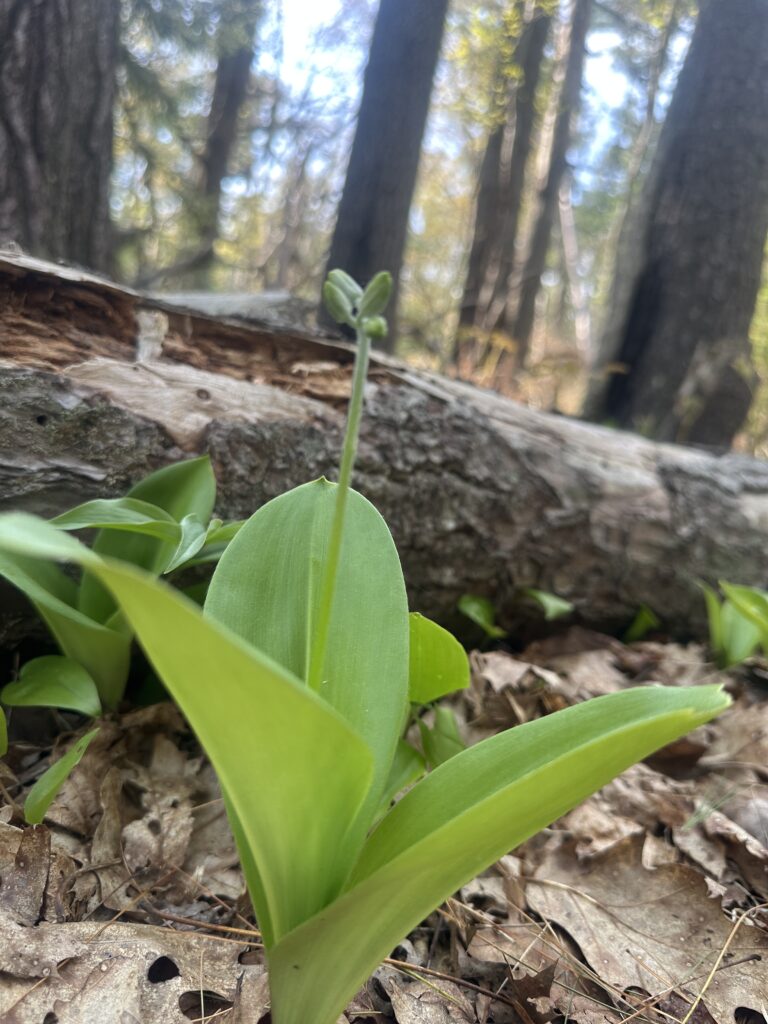
As like each month, I also spent time at my delimited site. A Solitary Sandpiper took a liking to the pond for several weeks, and we were thrilled they stuck around long enough for a positive ID and some photos. I sat in the rain and waited, but the day I was finally able to see the sandpiper for long enough, was the day we brought a stranded Eastern painted turtle to live at the pond. (Usually you help a turtle cross the road by bringing them to the other side in the direction they were going, but this specific turtle was stuck up against a curb not going right or left, so I had no idea and there was no safe spot, so I brought them to the pond.) The turtle swam away happy, and then we looked left, the Solitary Sandpiper was standing.

Checking in with my Adopted Tree, I noticed some green this month! I thought this tree was dead, and it might be, mostly, but it’s not completely. A Yellow Warbler sang, an Eastern Kingbird displayed, other birds stopped by like a Least Flycatcher, Red-winged Blackbirds, and more. This tree is never alone.
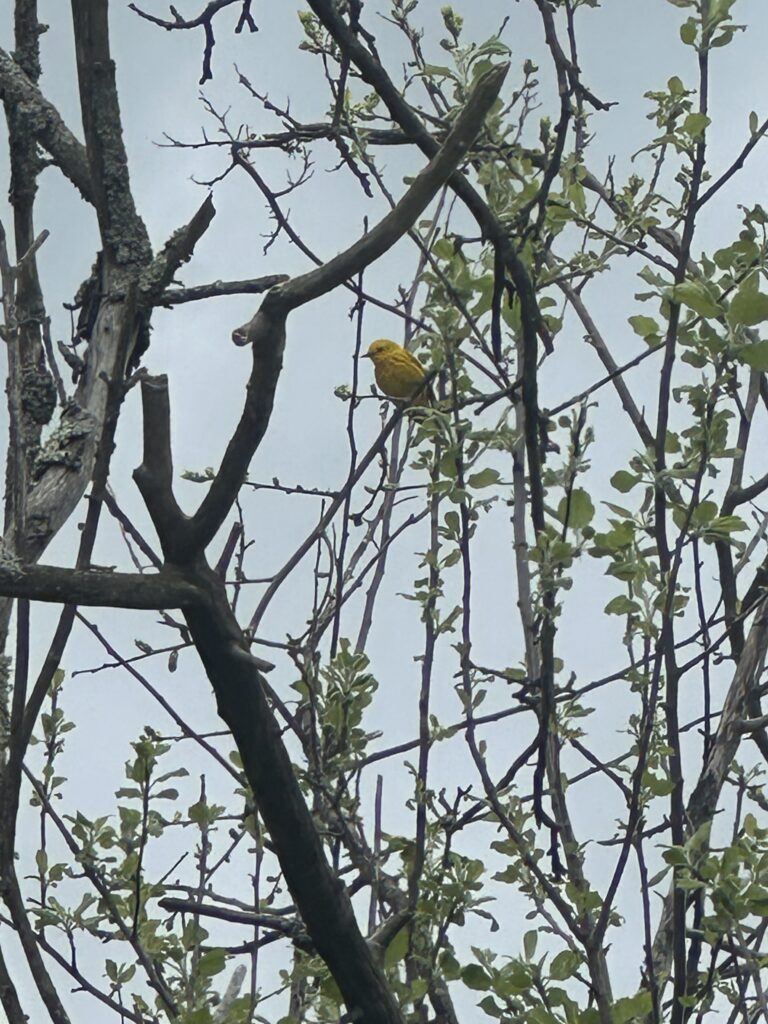
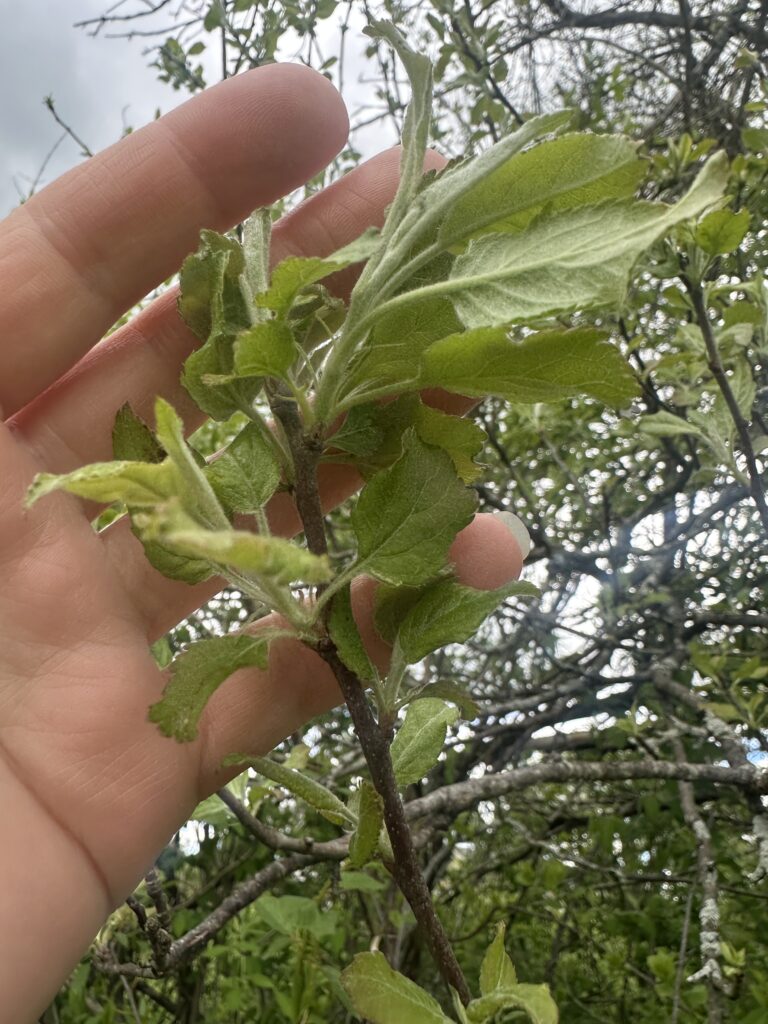

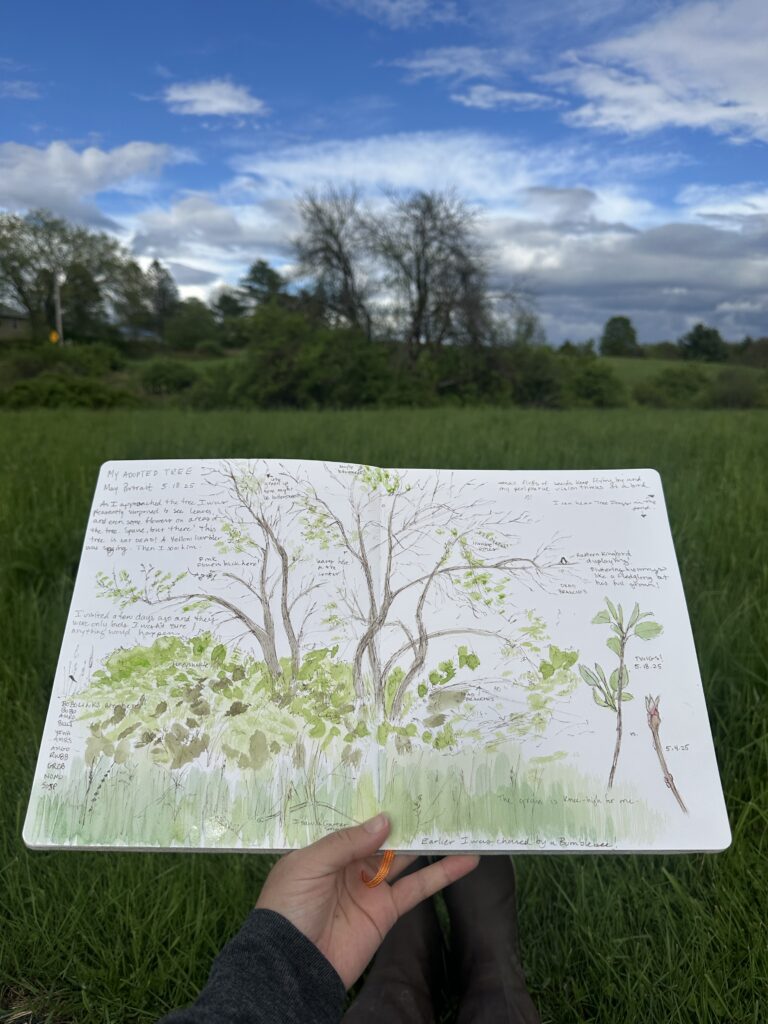
inspiration
Browse my favorite blog posts: inspiration, resources, and updates that I think you'll love.
